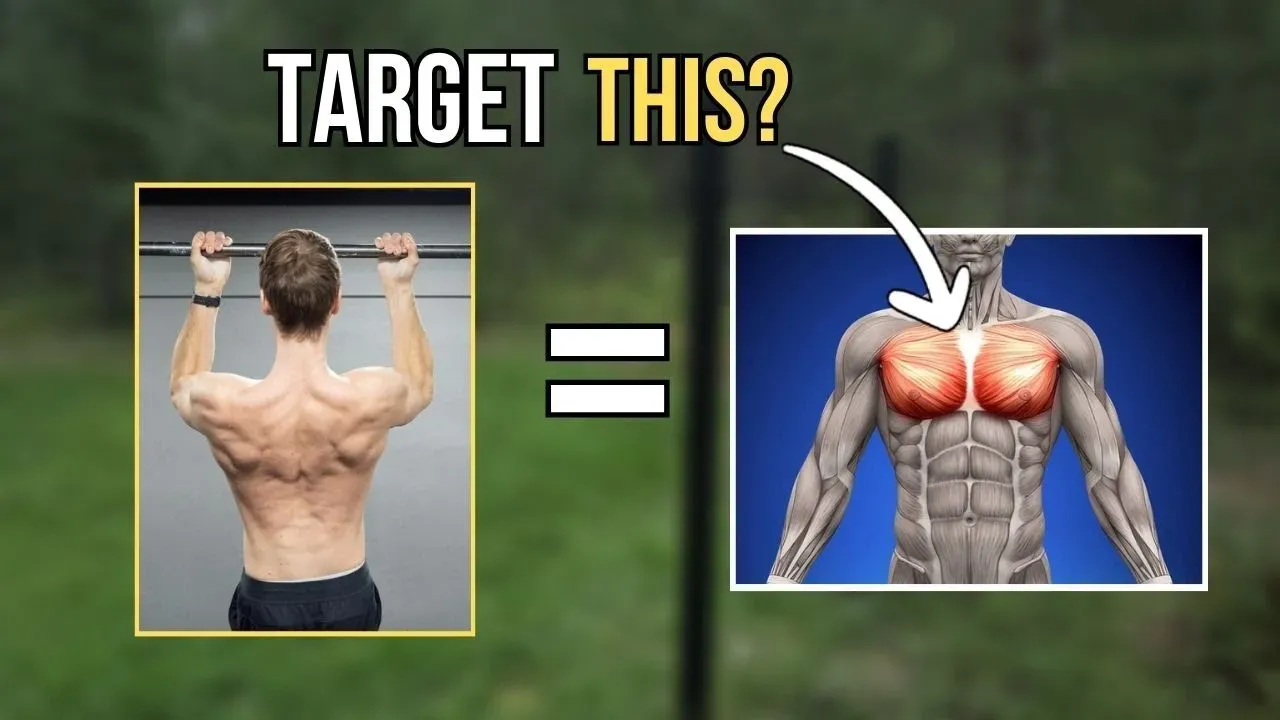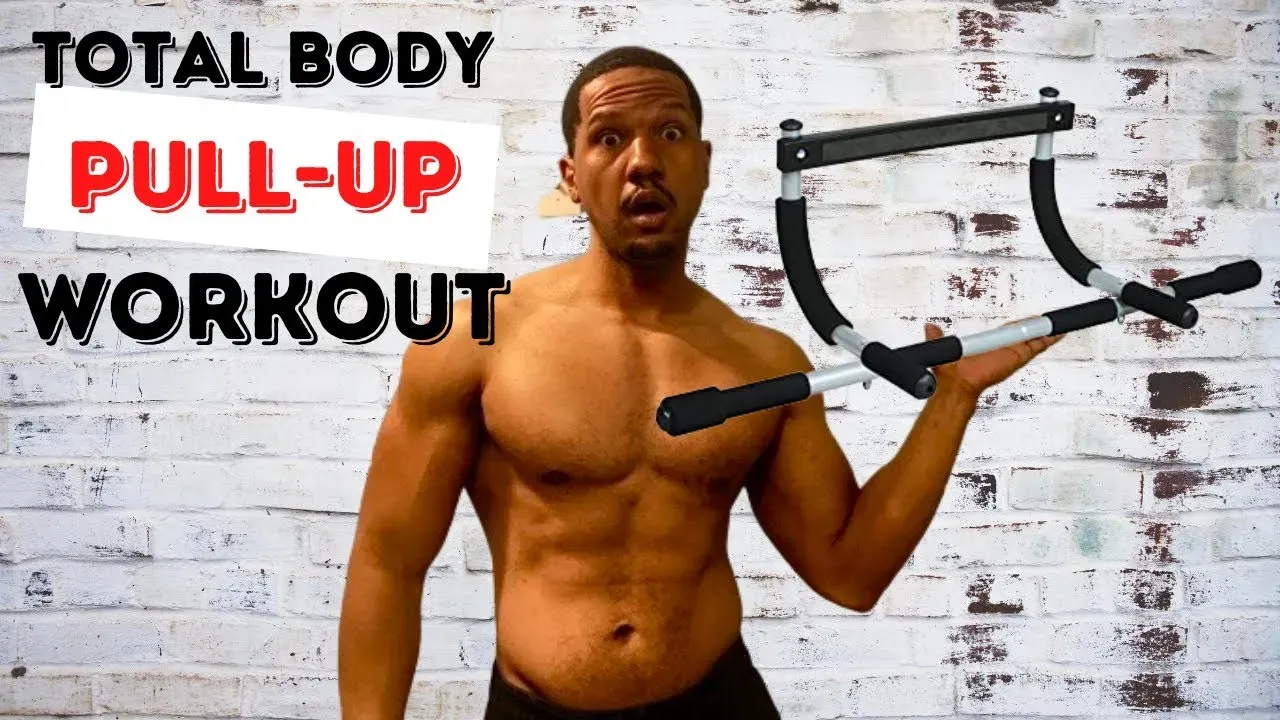Table of Contents
Let's be honest, getting a solid chest workout often feels like it requires a trip to a crowded gym, right? Bench presses, fly machines, the whole setup. But what if you could build a strong, defined chest without leaving your house, using equipment you might already own? This is where the humble pull up bar comes into play. Most people think pull-up bars are only for lats and biceps, but they are surprisingly versatile tools for hitting your chest muscles effectively. Forget complicated routines and fancy equipment; a strategic chest workout at home with pull up bar is absolutely achievable. We're going to cut through the noise and show you exactly how to leverage this simple piece of gear for real chest development. We'll cover the key exercises that target your pecs, how to put them together into a practical routine, and offer tips to make sure you're getting the most out of every rep. Ready to transform that doorframe into your personal chest-building station? Let's get started.
Why Your Pull Up Bar Is a Home Gym Essential

Why Your Pull Up Bar Is a Home Gym Essential
More Than Just Pull-Ups
Look, I get it. You see a pull-up bar and think "back and biceps." That's the classic view. But limiting it to just pull-ups is like buying a sports car and only driving it to the grocery store. This simple metal bar stuck in your doorway or mounted on a wall is a gateway to a full-body calisthenics regimen, and yes, that absolutely includes hitting your chest. It allows for hanging exercises, support exercises, and variations that shift the focus onto those pectoral muscles in ways you might not expect. It’s not just a one-trick pony; it’s a fundamental piece of equipment that opens up a whole range of movements beyond the standard gym fare.
Functional Strength and Muscle Engagement
Traditional chest exercises often isolate the pecs, which is fine for hypertrophy, but bodyweight movements on a pull-up bar challenge your muscles differently. They require more stabilization and coordination, engaging supporting muscles alongside your chest. Think about it: when you're hanging or supporting yourself, your core, shoulders, and arms are all working together. It's less about pushing weight and more about controlling your body through space. This builds functional strength that translates to real-world activities, not just looking good in a mirror. I remember trying my first assisted chest-to-bar pull-up variation, feeling muscles light up I didn't even know I had, far beyond a basic bench press.
Key Benefits of a Pull Up Bar at Home:
- Extreme Versatility: Supports pulling, pushing (via dips/support holds), and core work.
- Space-Saving: Fits in a doorway or on a wall, minimal footprint compared to a bench and weights.
- Cost-Effective: Relatively inexpensive one-time purchase.
- Full Body Engagement: Works multiple muscle groups simultaneously.
- Builds Functional Strength: Improves body control and stability.
The Ultimate Home Gym Bang for Your Buck
Let's talk practicalities. Setting up a full home gym with benches, barbells, and weights costs a fortune and eats up serious real estate. A pull-up bar? A fraction of the cost, takes up next to no space, and provides a platform for dozens of exercises targeting your entire upper body and core. For anyone serious about training at home without breaking the bank or turning their living room into a weight room, the pull-up bar is arguably the single most essential piece of equipment you can own. It's the foundation for a robust bodyweight training program, including that crucial chest workout at home with pull up bar.
Essential Exercises for a Chest Workout at Home with Pull Up Bar

Essential Exercises for a Chest Workout at Home with Pull Up Bar
Inverted Rows with a Chest Focus
forget traditional pull-ups for a second. To hit the chest with a bar, you often need to flip your perspective. Inverted rows, performed under the bar, are usually a back exercise. But adjust your body angle and grip, and you can shift significant tension to your pecs. Set the bar lower, lie on your back underneath it, and grab with an overhand grip slightly wider than shoulder-width. Now, pull your chest towards the bar, squeezing your shoulder blades together but also focusing on the contraction in your chest as you reach the top. The lower the bar (closer to the floor), the harder it gets. This is a fantastic starting point for a chest workout at home with pull up bar, allowing you to control the difficulty by simply adjusting your body angle.
Pseudo Planche Push-Ups Off the Bar
Alright, buckle up, because this one feels a bit more advanced, but scaled correctly, it's a killer for the chest and shoulders. Instead of using the bar to hang, you'll use it for support. If your bar is low enough, you can perform elevated push-ups with your hands on the bar. To turn this into a chest-dominant move with a planche lean, place your hands on the bar and lean your shoulders forward aggressively over your hands as you descend. Your body will form a slight angle, putting immense tension on the upper chest and front deltoids. It feels different from a standard push-up because the instability of the bar and the forward lean force your stabilizers into overdrive while the pecs bear the brunt of the load. It's humbling, but effective.
Ways to Increase Difficulty on the Bar:
- Adjust body angle (for inverted rows/push-ups).
- Use a narrower or wider grip.
- Slow down the tempo of each rep.
- Add a pause at the top or bottom of the movement.
- Introduce instability by using rings or straps attached to the bar.
Chest-to-Bar Pull-Ups (The Aggressive Pull)
Yes, a pull-up can work your chest, especially the lower portion, if you do it right. Standard pull-ups hit the back hard. To engage the chest more, you need to pull *higher* and focus on the *depression* of your scapulae at the top. Think about pulling your sternum towards the bar, not just your chin over it. This increased range of motion and the aggressive pull upwards recruit the lower chest fibers. It requires significant back strength too, obviously, but the emphasis on getting *above* the bar shifts some of the work forward. It's a compound movement, sure, but neglecting its chest-building potential, especially when aiming for a comprehensive chest workout at home with pull up bar, would be a mistake.
Structuring Your Chest Workout at Home with Pull Up Bar

Structuring Your Chest Workout at Home with Pull Up Bar
Building Your Routine
so you've got these killer chest exercises using your pull-up bar – the inverted rows, the pseudo planche push-ups, and those aggressive chest-to-bar pulls. Now, how do you string them together into a proper Structuring Your Chest Workout at Home with Pull Up Bar? It's not just about doing random sets; it's about programming for progress. You need to think about volume, intensity, and rest. A good starting point for many is a circuit-style approach, moving from one exercise to the next with minimal rest in between sets of different movements, resting longer between full rounds. Or, you can go for straight sets, completing all sets of one exercise before moving to the next, which allows for more focused intensity on each specific movement pattern.
Exercise | Sets | Reps/Hold Time | Rest Between Sets |
|---|---|---|---|
Inverted Rows (Chest Focus) | 3-4 | 8-15 reps | 60-90 seconds |
Pseudo Planche Push-Ups (Scaled) | 3-4 | As many quality reps as possible (AMRAP) or 15-30 second hold | 60-90 seconds |
Chest-to-Bar Pull-Ups (Scaled or Assisted) | 3-4 | 5-10 reps | 90-120 seconds |
Mastering Your Chest Workout at Home with Pull Up Bar: Tips & Troubleshooting

Mastering Your Chest Workout at Home with Pull Up Bar: Tips & Troubleshooting
Nailing Down Your Form: It's Not Just Hanging Around
so you know the exercises now. But just flailing around on the bar won't build jack. Mastering your chest workout at home with pull up bar hinges entirely on your form. For those inverted rows, think about driving your chest *to* the bar, not just pulling with your arms. Keep your body rigid, like a plank. Don't let your hips sag. For the pseudo planche push-ups, that forward lean is crucial. You're trying to get your shoulders over your hands, loading the pecs and anterior deltoids. It's uncomfortable at first, maybe even feels unnatural compared to a standard push-up, but that specific angle is what targets the chest effectively. And those chest-to-bar pull-ups? It's less about momentum and more about controlled power. Initiate the pull by depressing your shoulder blades, then drive your elbows down and back. Don't just kip your way up; control the descent too. Quality over quantity, always. One perfect rep is worth ten sloppy ones.
Consistency and Progression: The Real Muscle Builders
Let's talk brass tacks. Seeing results from your chest workout at home with pull up bar isn't a one-week gig. It's a long haul, built on consistency. Aim for 2-3 sessions per week, allowing your muscles time to recover and rebuild. Don't do the exact same number of sets and reps forever; your body adapts. Once you can comfortably hit the top end of your rep range (say, 15 quality inverted rows), it's time to make it harder. Shorten the rest periods, increase the reps slightly, or try a more challenging variation. For instance, move your feet closer to the bar on inverted rows. For pseudo planche push-ups, try holding the leaned-forward position at the bottom for a few seconds. If chest-to-bar pull-ups are too tough, use a resistance band looped over the bar for assistance, and gradually move to thinner bands as you get stronger. Progress isn't linear, you'll have off days, but keep showing up. That's the secret sauce.
Common Troubleshooting & How to Fix It:
- Grip Pain: Ensure you're not death-gripping the bar. Use chalk if needed, or consider padded gloves if skin tearing is an issue (though toughening up calluses is part of the game).
- Shoulder Discomfort: Often a sign of poor form or lack of mobility. Focus on controlled movements, warming up properly, and possibly reducing the range of motion until strength improves.
- Not Feeling It in the Chest: You're likely relying too much on other muscles. For rows, focus on the chest squeeze. For push-ups, exaggerate the forward lean. For pull-ups, actively try to pull your sternum towards the bar. Mind-muscle connection matters.
- Can't Do a Single Rep: Scale back! For rows, raise the bar higher or bend your knees. For push-ups, reduce the forward lean or do them on the floor first. For pull-ups, use bands or negative reps (jump to the top and lower slowly).
Your Pull Up Bar: A Chest Builder's Secret Weapon
So there you have it. That bar hanging in your doorway isn't just for bragging rights about pull-up numbers. It's a legitimate tool for building a solid chest, right there in your living room. We've laid out the moves; the rest is up to consistent effort and smart execution. Stop making excuses about needing a full gym setup. Your pull-up bar, combined with a little know-how, is more than enough to challenge those pecs and see real progress. It might not be the flashiest way to train chest, but it's effective, accessible, and frankly, a bit underrated. Now go put that knowledge to work.
